|
During the Summer Road Trip Ft. McAllister State Historic Park served as our base of operations. Georgia State Parks and Historic Sites has a spacious campground and some beautiful cottages built along the coastal salt marshes in the park. The accommodations are affordable and comfortable as well as convenient to the sites we visited on out trip. We drove to each site from this location with the exception of Milledgeville, which we visited on our way to the coast. Let me take a minute at this point to say that the people we encountered in Richmond Hill were as friendly as any we've met in Georgia. The park staff, people in stores, everyone we encountered were just good friendly folks. We definitely recommend dinner at Fish Tales on Ft. McAllister Rd. The restaurant sits right on the beautiful Ogeechee River, the food is good, the atmosphere great, and the bartender was wearing overalls and a bow tie.
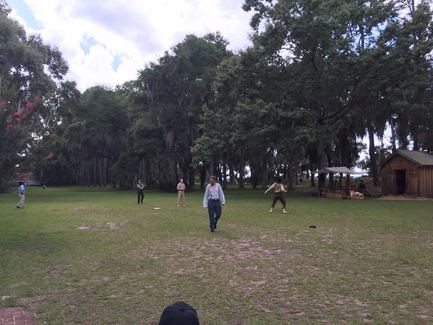 Getting the 1860's Team Organized Getting the 1860's Team Organized Ft. McAllister is not a new site for us. We've been there a couple of times, including a Christmas road trip this past December. The Winter Muster is a great program surrounding the anniversary of the fort's capture that also ties in period Christmas traditions. But this was their Independence Day celebration. There were fort tours, rifle and artillery demonstrations, a little music, and, appropriately, baseball. Baseball in the 1860's was a bit different than baseball today. I'm not talking Field of Dreams and Shoeless Joe different. I mean different.
Needless to say, the game is unpredictable and full of laughs. It was a fun experience just to watch.
0 Comments
By Sam Burnham @C_SamBurnham The Summer Road Trip carried us further to the south, to Glynn County. Jekyll Island is a true Georgia jewel. Our visit started at The Georgia Sea Turtle Center.
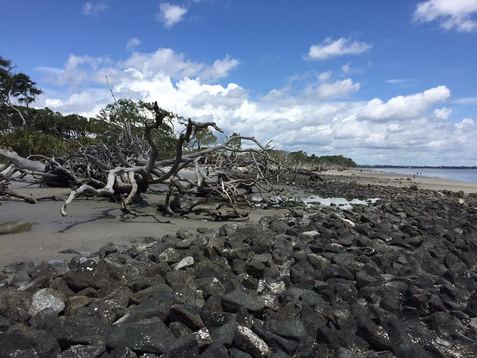 A View of the Iconic Driftwood Beach A View of the Iconic Driftwood Beach Speaking of beaches and habitats, we made a stop at Driftwood Beach, along the northern shore of the island. The beach is strewn with dead and bleached out trees lying on a strip of sand that is buffered from the waves by a coarse layer of rock. Among the racks are small dips and pits that form small pools that are teeming with life. Fish, mollusks, small crab, and other small sea life can be seen in the pools. Shells are caked on the rocks in thick layers that you can't even pry apart. Many of the shells are still inhabited. It's hard to tell where life ends and death begins, where the ocean ends and land begins. The elements sort of fade into each other. It's not what most folks would think of as a beach. There are sure to be a few folks sitting out in the sun or splashing in the waves but the crowds of sunbathers sitting next to umbrellas on a broad strip of white sand is not Driftwood Beach. To me, it's perfect. To me, it's iconic Georgia.
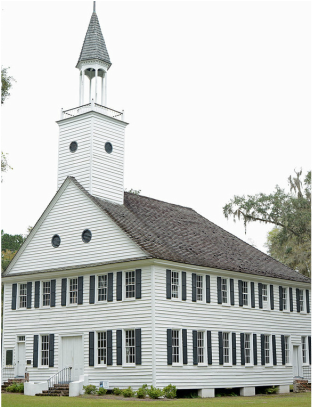 Midway Church in Midway Midway Church in Midway The next stop on our Summer Road Trip carried us to Sunbury and Midway in Liberty County. Georgia is often noted for its strong Tory presence during the war but Liberty County was a patriot stronghold of sorts. The county's name was chosen by the fact that St. John's Parish, which would join St. Andrew's and St. James' Parishes to form one county, was the first in the state to vote for Liberty. St. John's Parish residents Lyman Hall and Button Gwinnett would join Augusta resident George Walton to be Georgia's three signers of the Declaration of Independence. Midway Church Cemetery is the final resting place of numerous warriors of the cause of Independence, including Daniel Stewart and James Screven.  St. Catherine's Sound & The River Medway As Seen From Ft. Morris St. Catherine's Sound & The River Medway As Seen From Ft. Morris Down the road from Midway is Sunbury. This town, nestled on St. Catherine's Sound, along the River Medway, was once a bustling seaport that rivaled Savannah in importing, exporting, and passenger travel. For several years, the friendly rivalry between Savannah and Sunbury urged each town to work to increase their productivity to overtake the other and be the top port. Sunbury had churhces, businesses, homes, and, of course, the protection of Ft. Morris. The depth of St. Catherine's and Medway made this river one of the deepest south of the Chesapeake. The fort was set on a location that offered it a clear line of fire on approaching ships before they could position for a broadside assault. It was an excellent site for a coastal town. But disease and other factors took their toll and Sunbury died. The forest took back the land that once was home of Georgia's greatest port. Nothing remained but the old cemetery and memories. But over the last several years, residential development has returned to Sunbury. People are building homes on the old development plots of the town. St. Catherine's Sound creates a beautiful view for these homes and jobs in nearby Hinesville and the Savannah area make this a great place for a home. 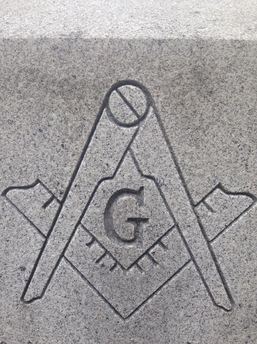 Masonic Monument, Ft. Morris Masonic Monument, Ft. Morris On the grounds of Ft. Morris State Historic Site is a memorial - a monument and a Live Oak that commemorate the first Masonic meeting in the colony of Georgia which was presided over by James Oglethorpe in February of 1734. The meeting was reportedly held in the shade under a giant oak that has since died. The new oak was planted as a suitable replacement and the monument was placed with the inscription telling the story. 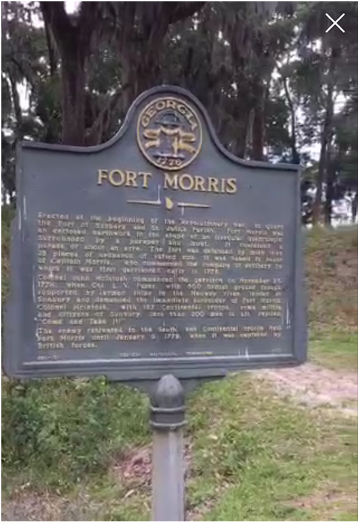 The Historic Marker at Ft. Morris The Historic Marker at Ft. Morris Ft. Morris saw action in the American Revolution. British forces, wishing to both control the port of Sunbury and punish the rebel hotbed, came to the area in November of 1778 and demanded the fort's immediate surrender. Col. McIntosh decided he wasn't ready to leave yet and, being a typical grouchy Georgian, suggested that perhaps the British should "Come and take it!" (Emphasis his). This suggestion was not one the British agreed with considering the force they had with them. They retreated to Florida and returned the following January with more men and then did take the fort. Ft. Morris would later serve the United States again, being renamed Ft. Defiance during the War of 1812. One of our favorite stories however, was a true Georgia "hey y'all watch this, somebody hold my beer" moment. There was an old cannon left over from the fort. Some folks who lived in the general area had located the old relic and decided that a good early 20th century thing to do to cure boredom might be to fire the old thing. So they came up with a makeshift cannon crew of good old Georgia boys with little to no experience or knowledge in artillery. They packed the barrel and fuse hole with powder. While the rammer was packing the barrel with a mop (in lieu of a real ramrod) the inexperienced and trigger happy guy at the fuse lit the disaster off prematurely. The rammer, scared out of his wits, fled the scene, leaving the mop shoved in the muzzle of the gun. The powder went off, Somewhere between the structural integrity of the cannon - compromised by advanced age, the muzzle obstructed by the mop, powder measured out by the 1st Georgia Amateur Artillery's Hold My Beer Battery, general user error, and Murphy's Law, that cannon went all to pieces. I don't mean metaphorically. The remains of the cannon, at least a half a dozen pieces, displayed like Tolkien's Shards of Narsil, awaiting the day when the King of Georgia will return to reforge the gun and battle the forces of evil. But he'll probably just blast the cannon into pieces again. Jokes and funny stories aside, Liberty County, of which we've really only sampled two towns so far, is a history buff's paradise. A stop in Midway is a must and we highly recommend Ft. Morris State Historic Site. The road continues. |
Sam B.Historian, self-proclaimed gentleman, agrarian-at-heart, & curator extraordinaire Social MediaCategories
All
Archives
November 2022
|

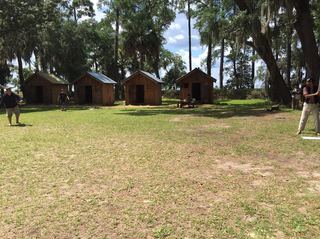
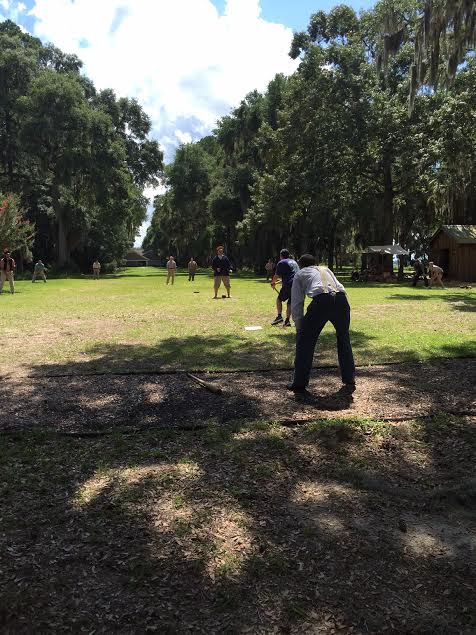
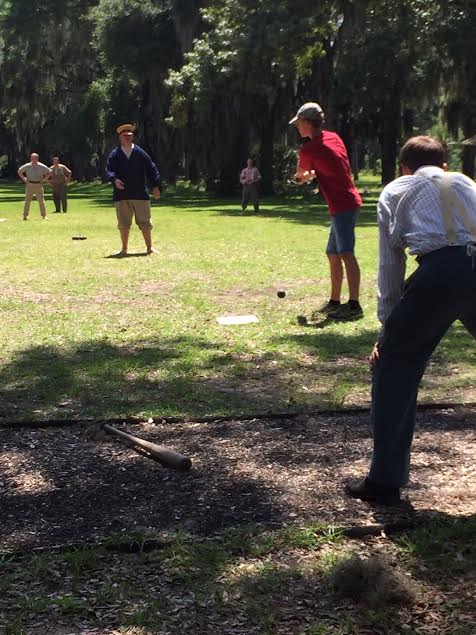
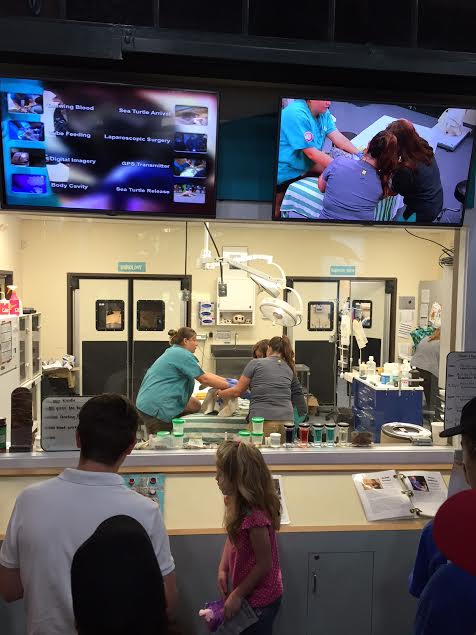
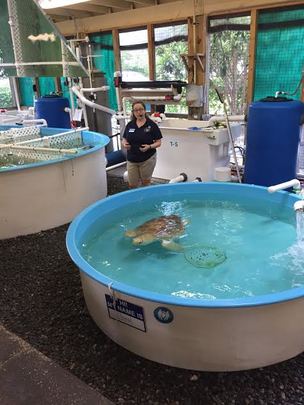
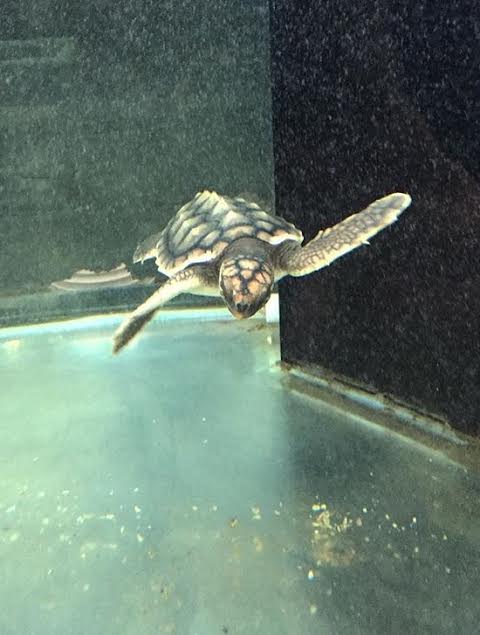
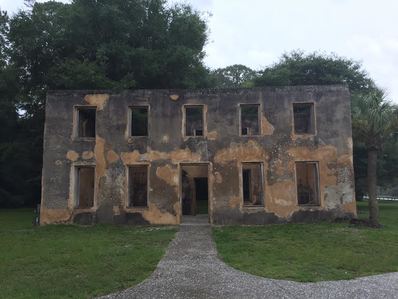
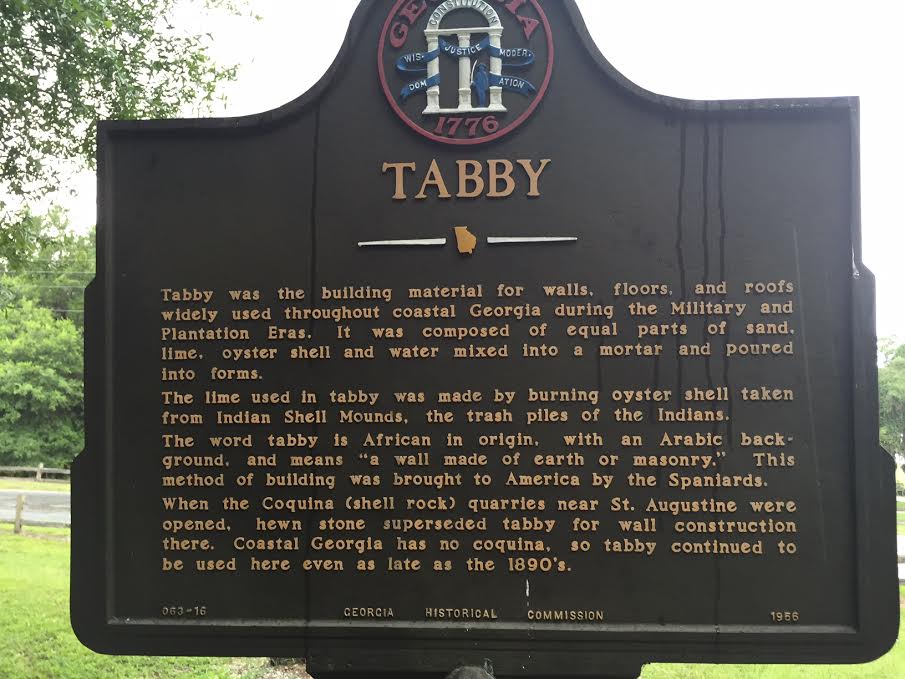
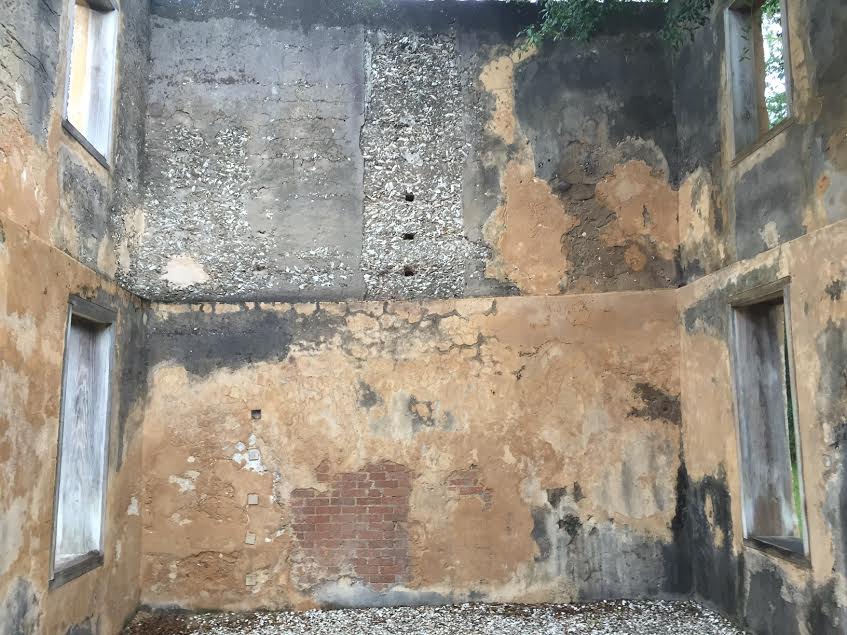




 RSS Feed
RSS Feed
